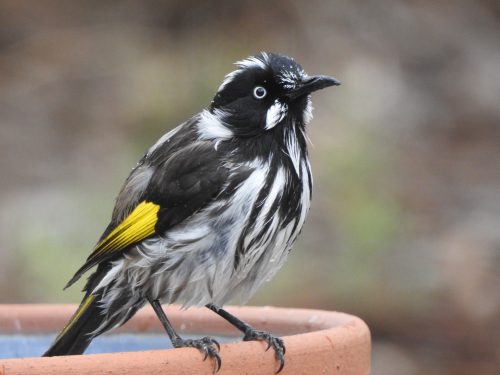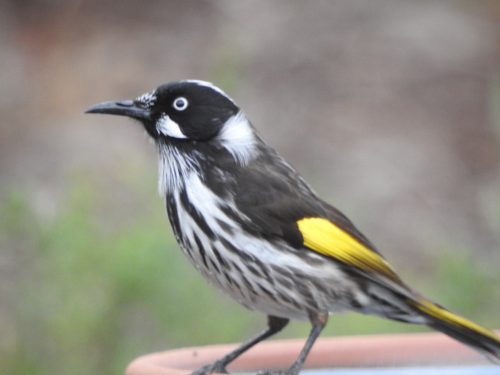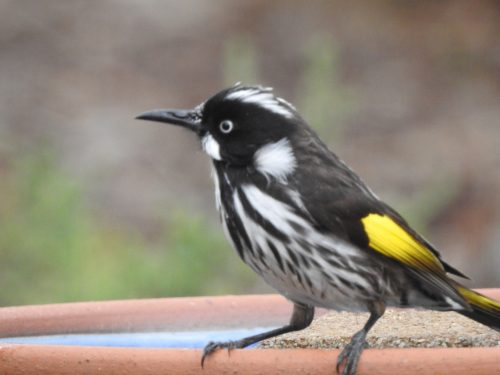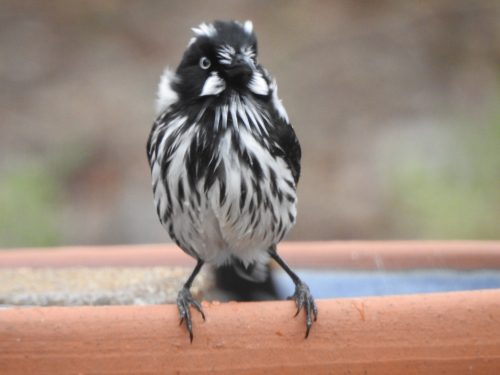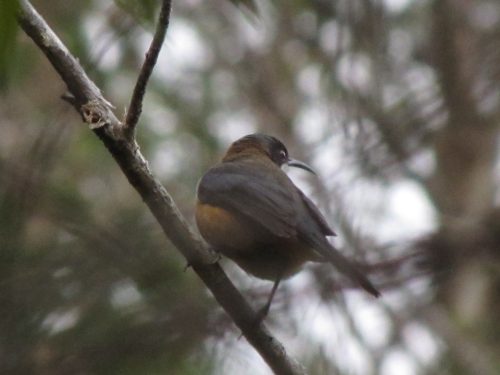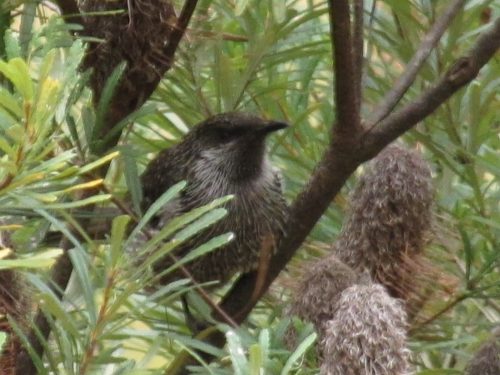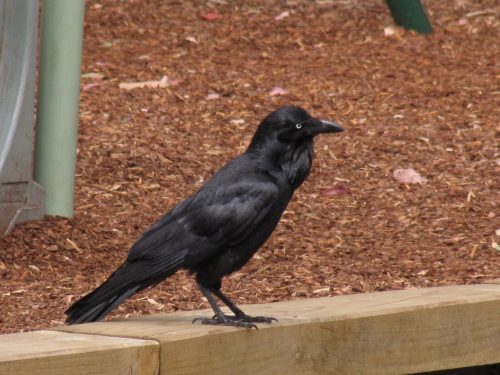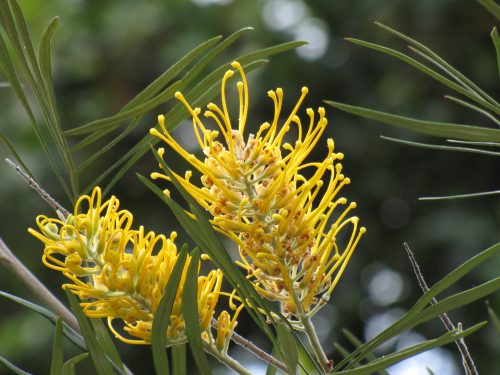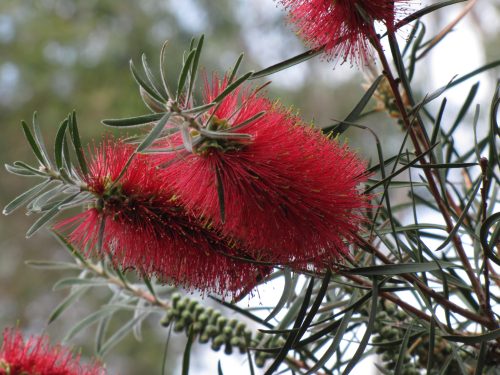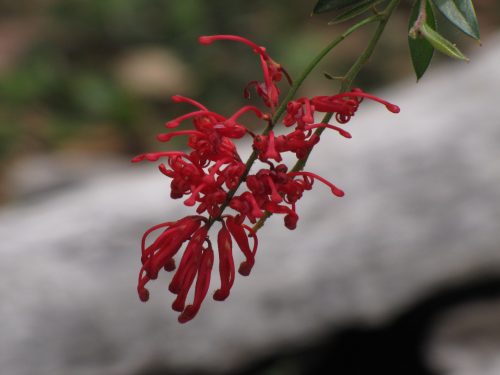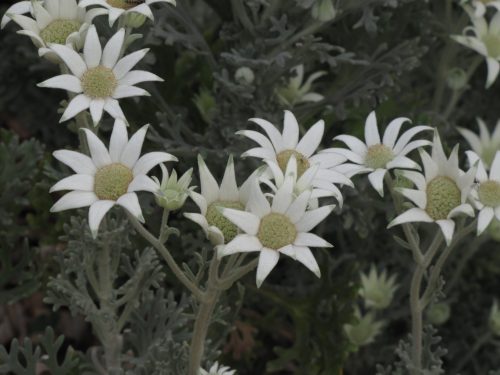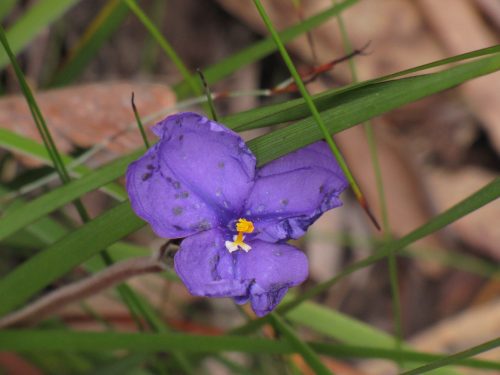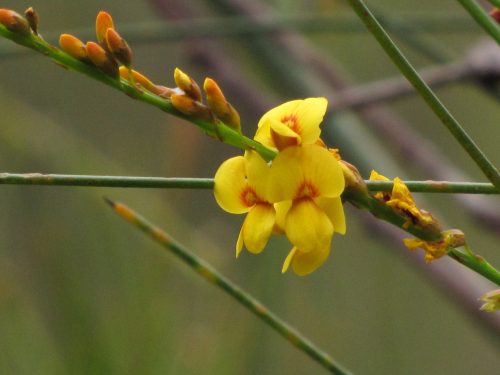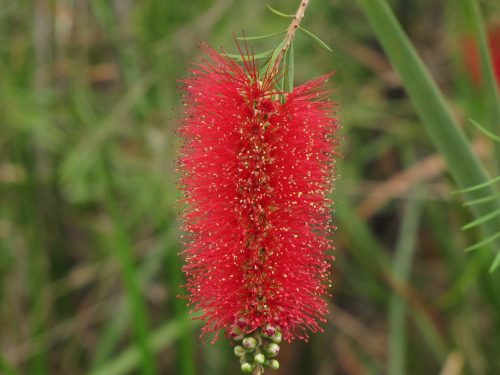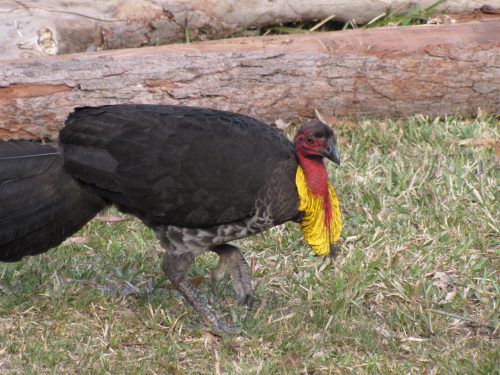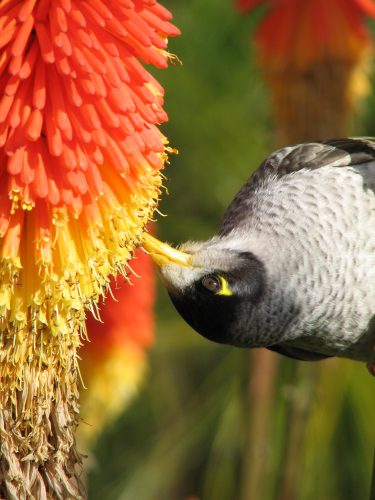Annoying Noisy Miners
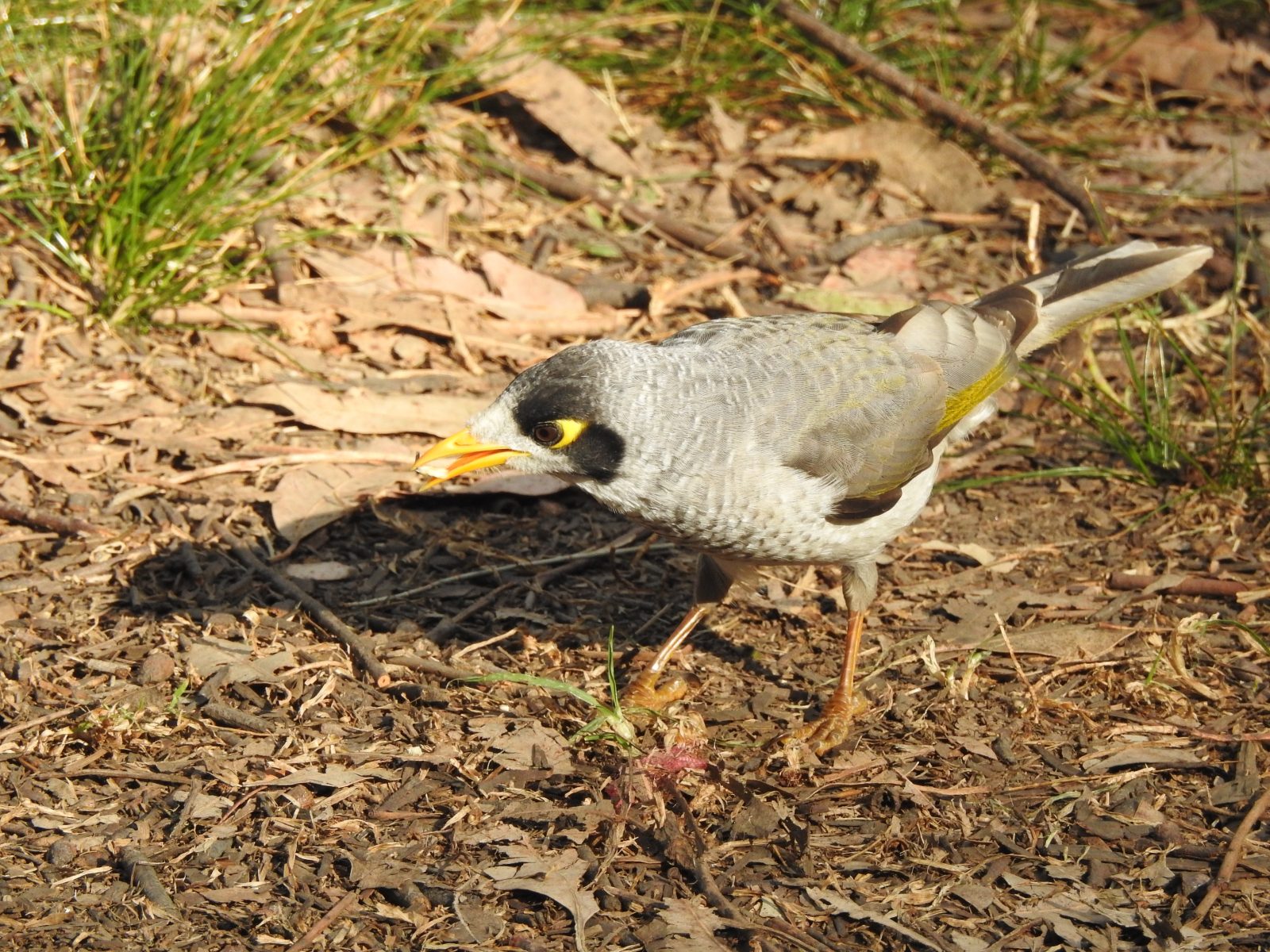
In my last post, I showed photos of some Laughing Kookaburras in the Lane Cove National Park in Sydney. This park is only a short distance from my son’s home, so over the years, I have visited it often. On this occasion, the kookaburras allowed me to come very close to where they were investigating something on the ground. I couldn’t determine what they were so interested in because I was enjoying photographing the birds from a close distance.
A Noisy Miner also joined in the quest for something to eat. They may have spotted some picnic leftovers and were looking for more. Just like the kookaburras, I was able to get close up photos of the miners in their natural environment without disturbing them in any way.
On other visits to this park, the Noisy Miners can be rather annoying. Just like the kookaburras, they are very bold and will come up to humans and even snatch food from the picnic tables when it is left uncovered or unattended. There are plenty of signs in this park warning people not to feed the birds, but that still doesn’t stop the birds snatching human food for themselves.
The Noisy Miner is one of many species of native Australian honeyeaters. It is not to be confused with the very similar Yellow-throated Miner. Their distribution overlaps in parts of Australia. There is yet another species – the Black-eared Miner but that species is endangered and is only found in a few small isolated populations.
The Noisy Miner is an aggressive species and has adapted well to urban environments and introduced plant species. It acts aggressively towards many of our smaller bird species such as finches and wrens, chasing them away from parks and gardens, taking their food and nesting spots. Some people also find that their raucous calling can be annoying at times.
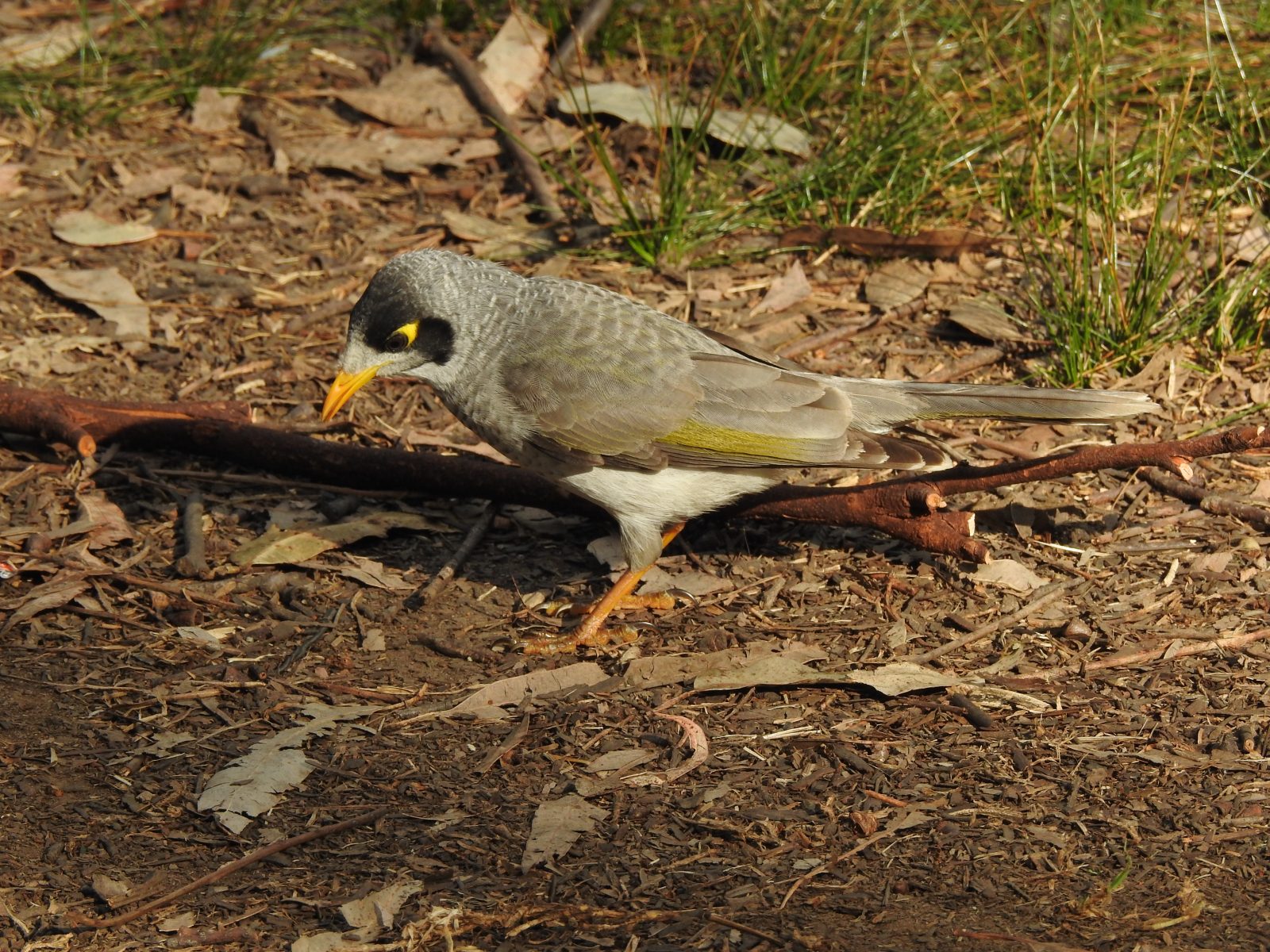
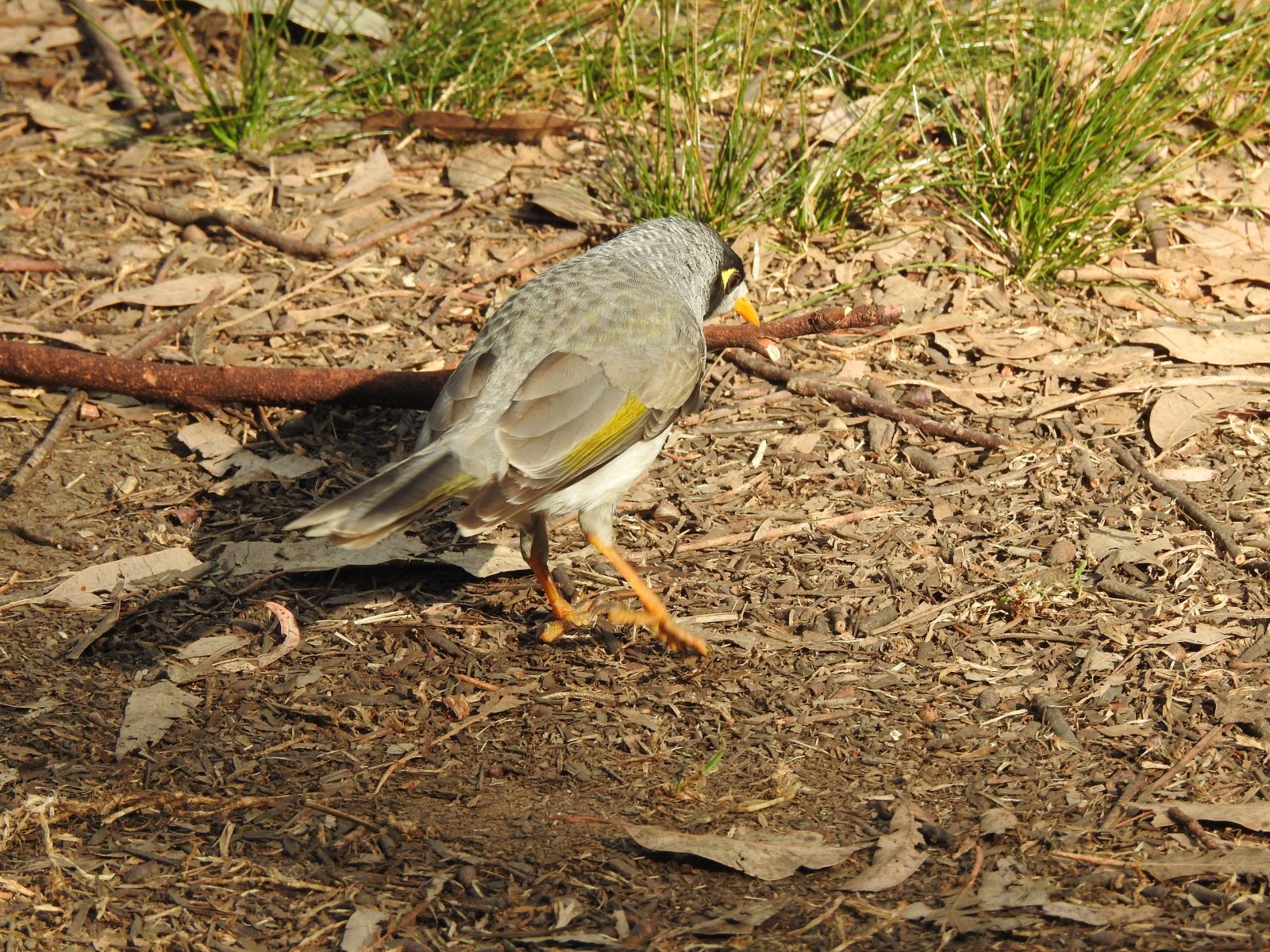
Noisy Miner up close
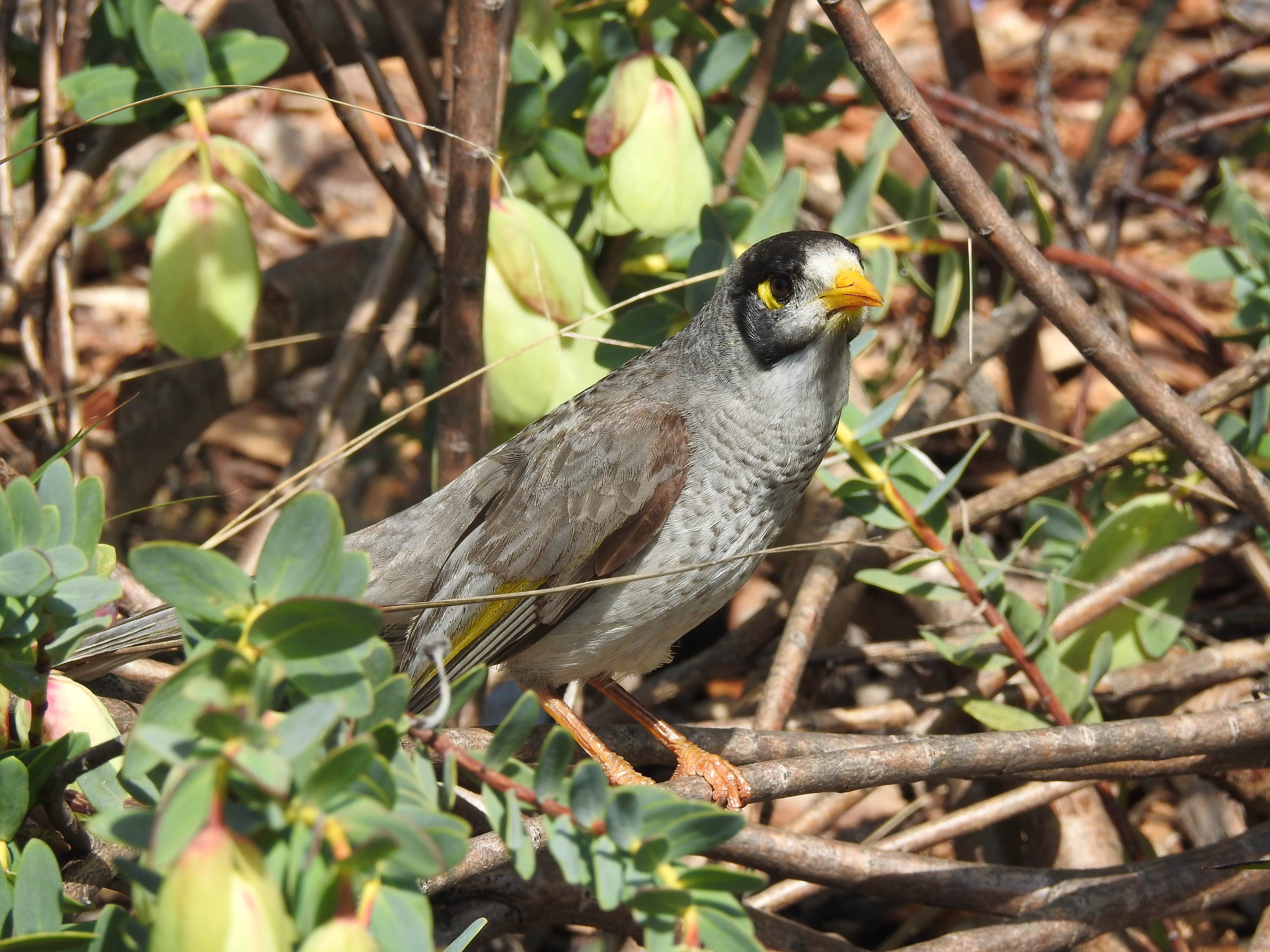
I am currently staying with my son and family in Sydney. Before arriving at his home I spent a few hours taking photographs and doing some birding in the Australian Botanic Gardens at Mount Annan. These beautiful gardens are situated in the south-west of Sydney. The plants are certainly worth seeing, especially in spring when so many are in full bloom. The birding is also very rewarding.
While I was taking plenty of photos of the many plants in flower (see photos below), I came across a very cooperative Noisy Miner. It was busily feeding on the nectar in one of the plants and was certainly unconcerned that I was barely a metre away, snapping away with my camera. It certainly makes bird photography easy when you get cooperative birds like this one. It is generally a very bold species, quite accustomed to being in contact with humans.
Food
The Noisy Miner is a member of the honeyeater family of birds. They usually feed on nectar which is generally in plentiful supply in our Australian native plants. They will also eat fruit and insects.
Habitat and distribution
Noisy Miners are a common species found throughout eastern Australia from northern Queensland through much of New South Wales, Victoria and South Australia. They are also present in Tasmania. They are found in open bushland, woodlands and forests. They have adapted well to life in parks and gardens in urban areas, often supplanting our smaller birds species through their aggressive nature. They are bold enough to take on much larger birds like magpies and ravens.
Further reading:
Rainbow Lorikeet in the “Moonlight”
Australian Museum article on the Noisy Miner
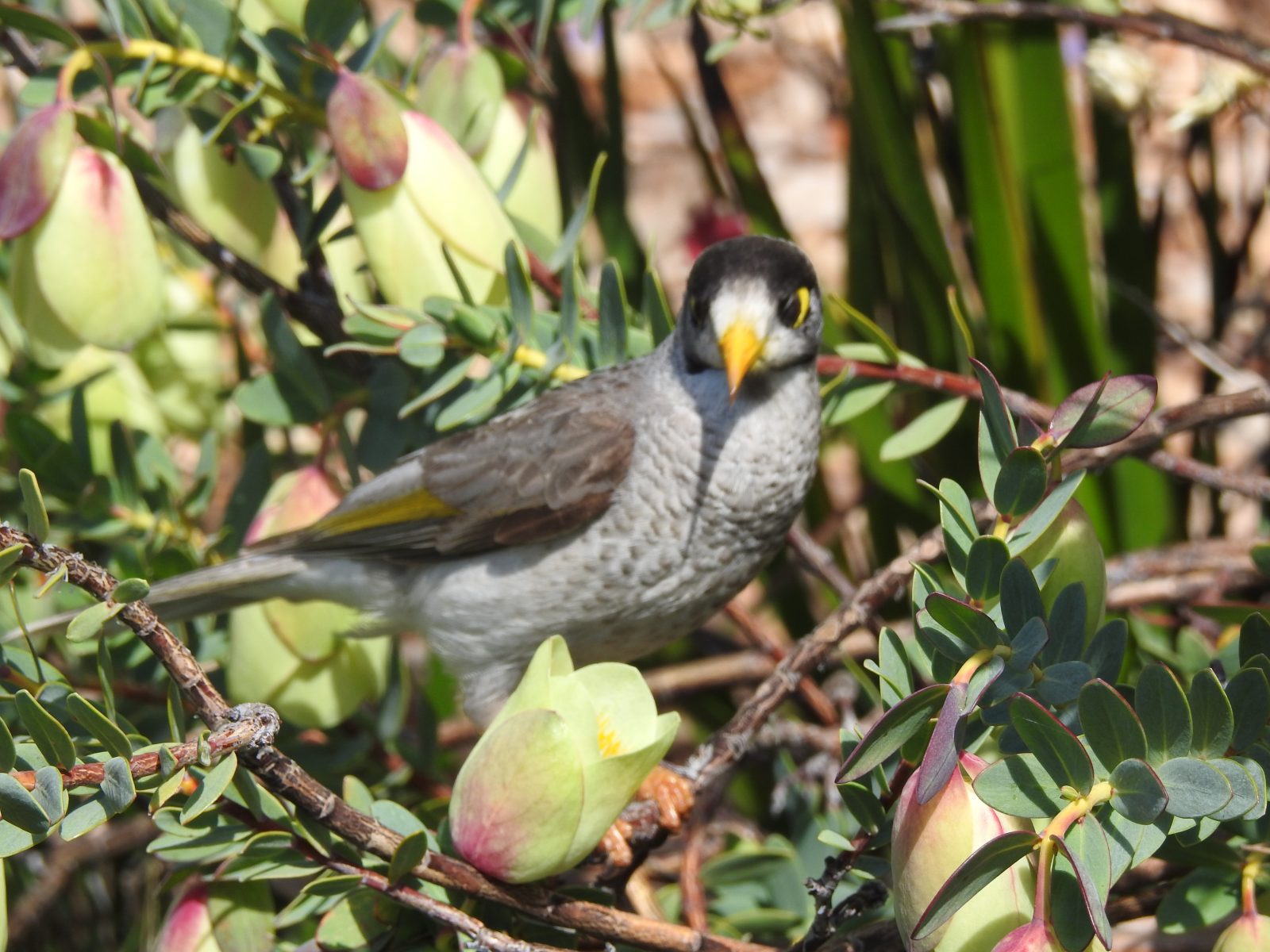
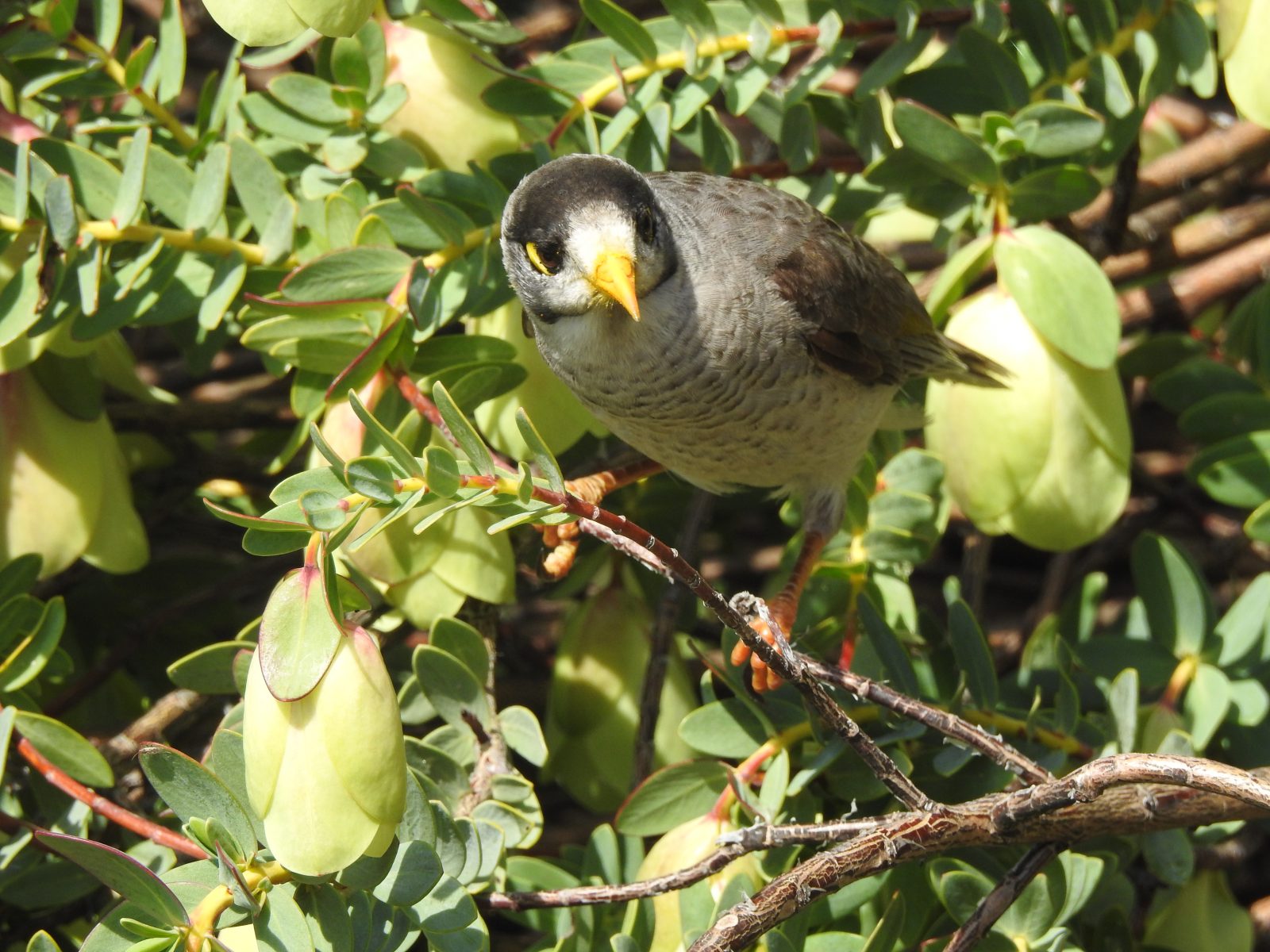
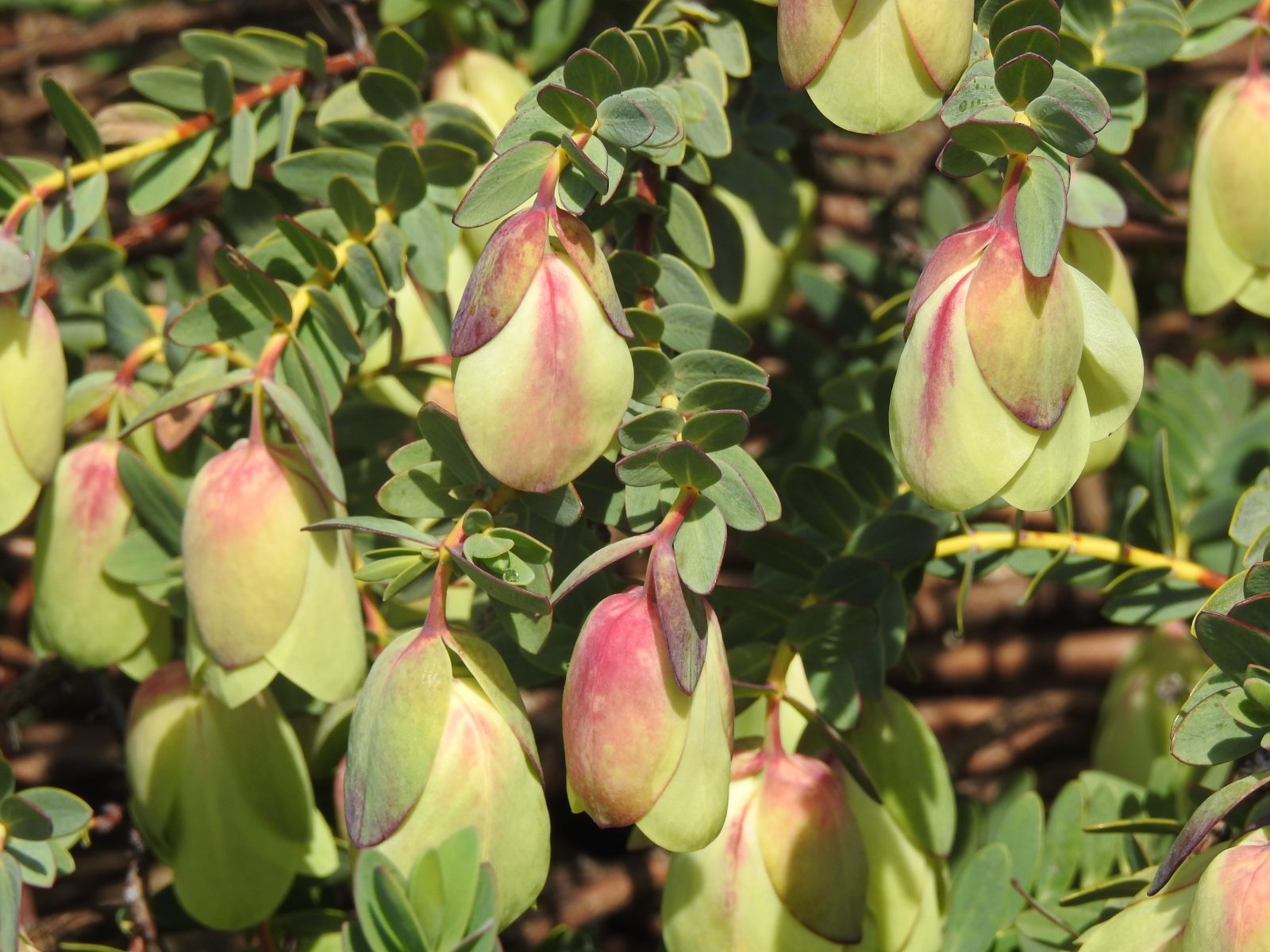
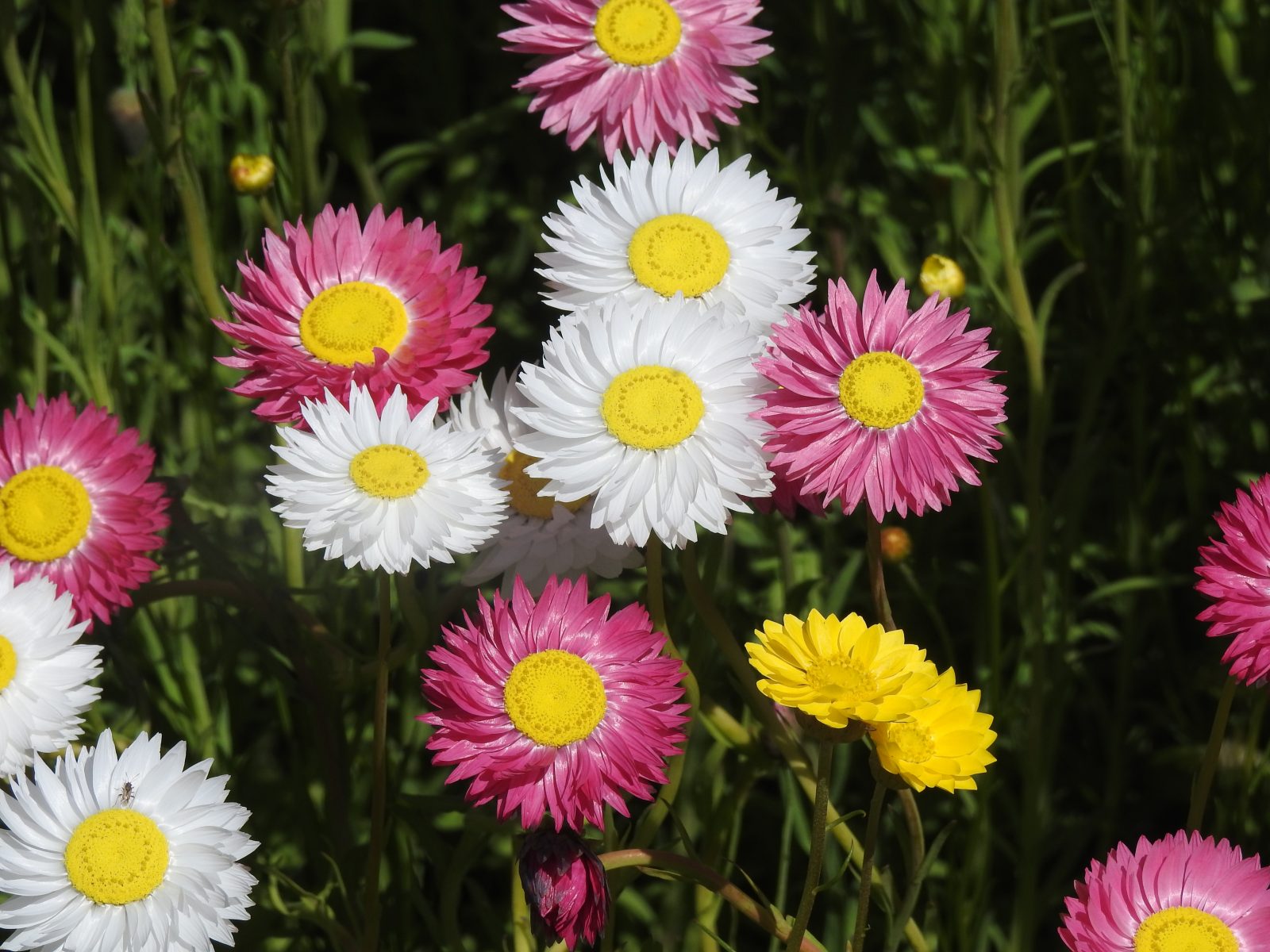
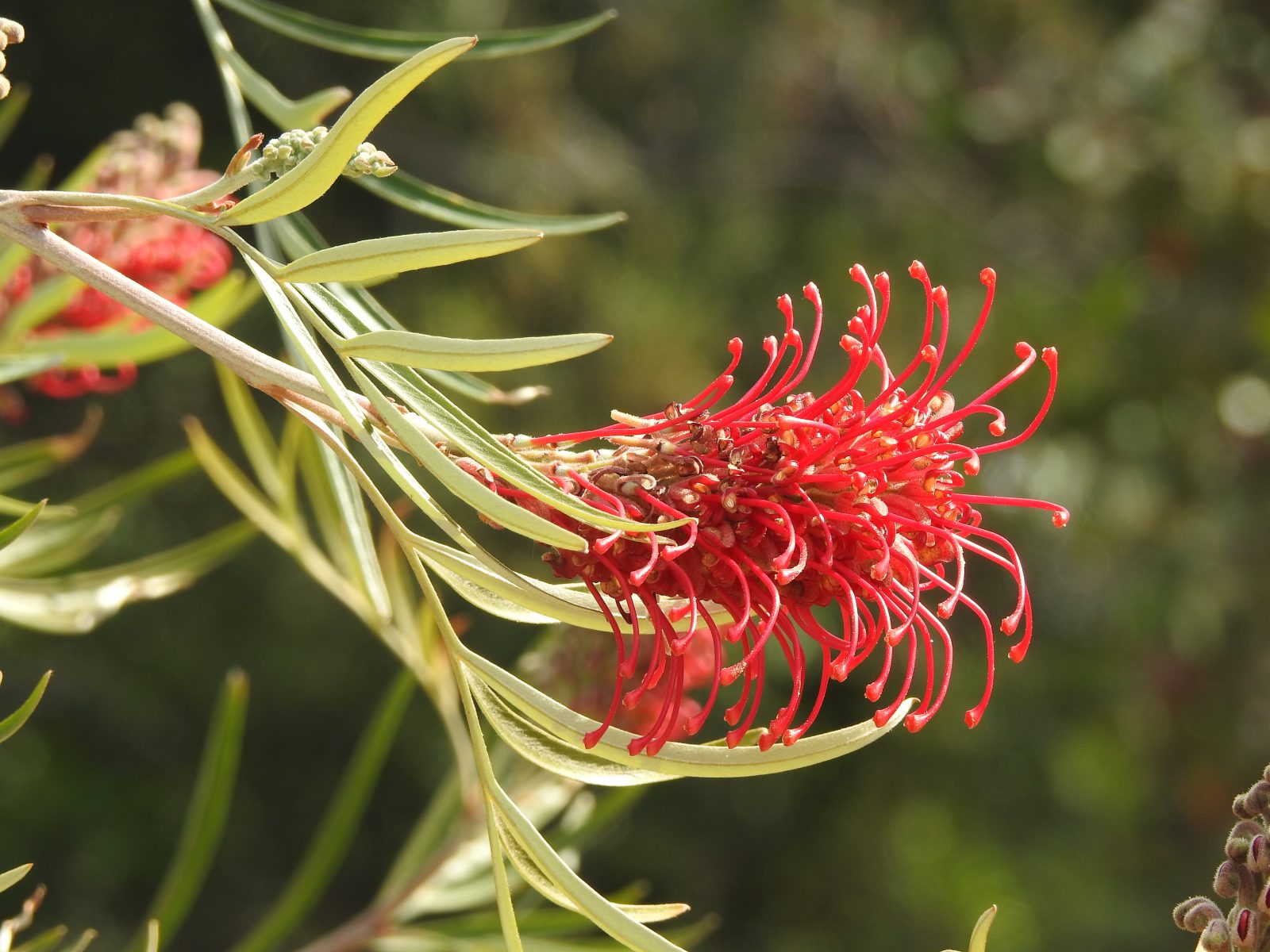
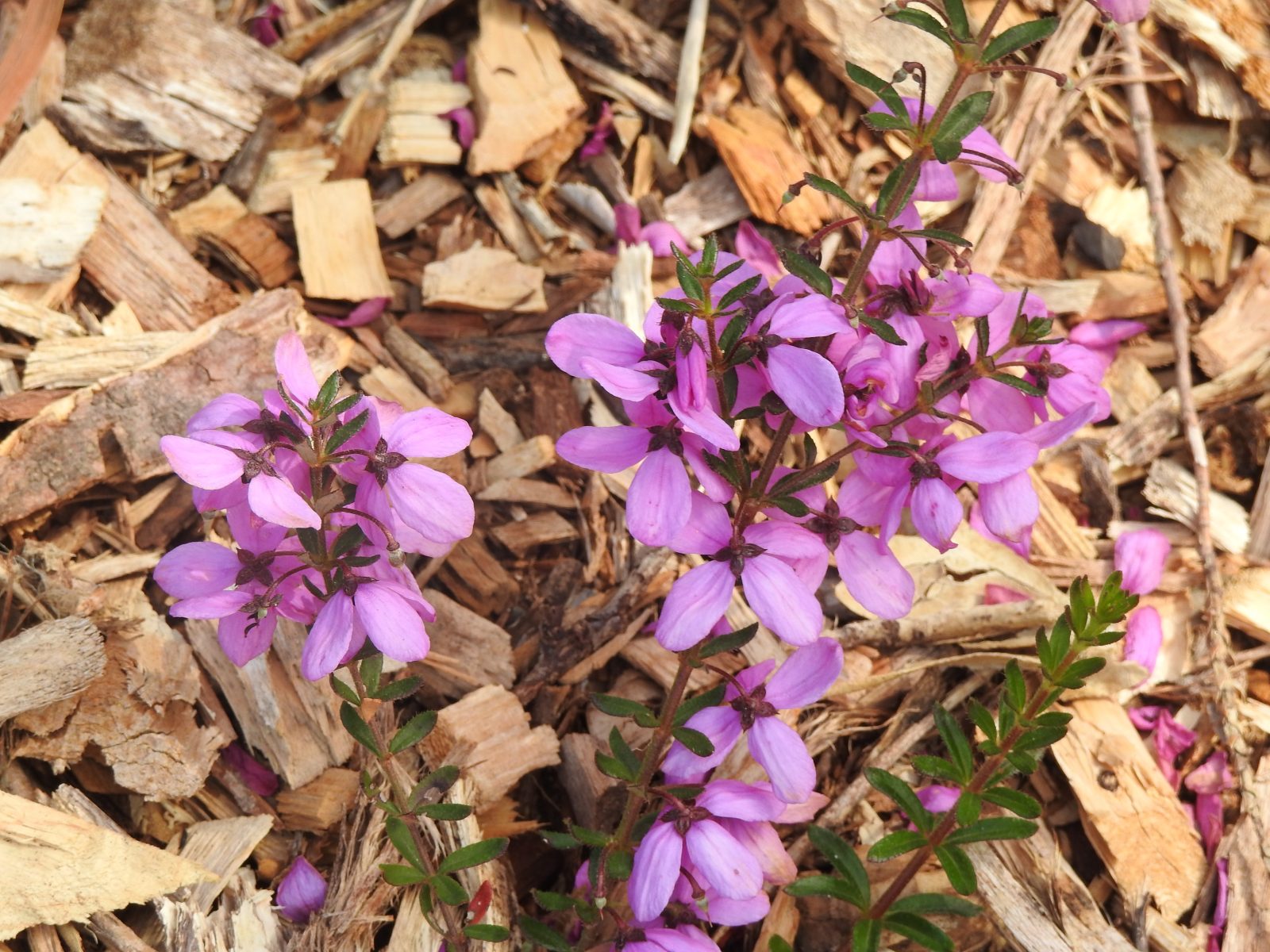
New Holland Honeyeater posing
During the warmer months of the year, there is a constant stream of birds coming to my birdbaths for a drink. On hot days many of them will also come for a dip in the water. What always amuses me, however, is the number of birds which also come for a dip in the water on freezing cold days.
Some of the birds which regularly visit my birdbaths include 8 different species of honeyeaters, 3 kinds of parrots, Australian Magpies, Little Ravens, Grey Currawongs, White-browed Babblers, Superb Fairy-wrens, House Sparrows, Diamond Finches, Common Starlings, Grey Shrike-thrush, as well as at least 3 kinds of pigeons and doves and many other species. Over the years I have written articles and shown photos of most of these species. To find those articles just go to the search box above right or the Categories list on the right-hand side-bar. Or you could check out the archives section.
It is now winter here in Murray Bridge, South Australia, where I live. Over recent days we have had some very frosty mornings and cold nights. The water in the birdbaths is very cold and may even freeze on a night like tonight with the temperature due to go down to minus 1 degrees Celsius (30 degrees F). The birds will still be happy to have a drink during the day and even a short splash in the very cold water. I don’t think that I will be joining them in a hurry. They can enjoy it all to themselves.
Recently I took a series of photos (above and below) of a solitary New Holland Honeyeater enjoying the water. The individual was quite unhurried seeing it had the water all to itself. This is unusual because normally there would be anything up to a dozen birds or more, all splashing away happily and creating quite a noisy party with all of their excited calls.
Good birding,
Trevor
An uncooperative Eastern Spinebill
Last week I had a close encounter with a very uncooperative Eastern Spinebill (see photo above) in the Ku Ring Gai Wildflowers Gardens in St Ives in Sydney. My wife and I enjoy visiting these gardens every time we come to stay with family in Sydney. Usually, there are many Australian native plants in flower. This year, however, it has been very dry in recent months in the Sydney region, so the flowering was not as good as we had expected. I still managed a few good photos, some of which are shown at the end of this post.
When the gardens are in full flower they can be wonderful. The numerous honeyeaters in this part of Australia flock to gardens and national parks like this and the birding can be wonderful. On this occasion, the bird life was very quiet and the Eastern Spinebill and the Little Wattlebird (see photo below) were the only honeyeater species present the day I visited.
Although I saw quite a few spinebills, the only photo I managed was the one above. The bird I managed a shot of turned its back at the crucial moment. It then flew off before I could get another photo. Such is the life of a nature photographer.
On my wanderings around the various paths in the gardens, I managed only a moderate list of birds. It was one of those slow birding days and not much was calling or coming into view of my binoculars. I managed a few photos of an Australian Raven (see photo below) and a very poor shot of two Laughing Kookaburras (not shown here because it was not in focus because they were too far away and then flew off before I could get closer).
Other birds seen or heard include:
- Striated Thornbill
- Eastern Yellow Robin
- Rainbow Lorikeet
- Sulphur-crested Cockatoo
- Australian Brushturkey
- Magpie Lark
- Eastern Whipbird
- Pied Currawong
Interestingly, I did not see any Australian Magpies on this visit. I usually see a few in the picnic areas. Nor did I see any of the resident Swamp Wallabies which often come out of the bush into the picnic areas as well.
More photos
Now for something different. Below, I have included some more photos taken in the gardens. These are some of the beautiful native plants flowering at the moment.
Enjoy.
Trevor
Get away, Turkey
Over recent weeks we have been staying with family in Sydney. During our four week stay, we have observed Australian Brush Turkeys on many occasions. One actually walked past their house on the footpath in Artarmon. Whenever we have visited various parks and gardens around this area, we have seen one or more turkeys. It is something we do not get to see where we live in South Australia, so it is something of a treat and special to us.
Last weekend I was driving my family to Little Athletics. I don’t normally get to see my grandson compete, so it was a special occasion. Just as we were about to get to the athletics track, I had to slow down for a turkey in the middle of the street. It was casually walking across the road, oblivious to the traffic which was thankfully quite light – our car was the only one at that point.
As the turkey strolled across the street, I was amused to see three Noisy Miners harassing it all the way. They obviously did not want the turkey in their territory. Perhaps they were nesting and were being overprotective of their eggs or young. The turkey was no threat to either eggs or young, so I don’t know why they were so annoyed by the turkey’s presence. Perhaps they were just being annoying for the sake of it.
Whatever the reason, it made me laugh to see the turkey ducking and weaving to get away from the miners’ pecks on its back. I didn’t get a photo because I was driving, and my camera was not within easy reach, anyway. I have included a photo above of a turkey taken in the nearby Lane Cove National Park a few days earlier. On that occasion, the turkey in the photo was harassing us as it attempted to scrounge some food from our picnic table. I’ll write about that in another post soon. The photo of a Noisy Miner below was taken some time ago in the Adelaide Botanic Gardens.
Other birds
For the rest of the afternoon, I was more interested in watching my grandson competing than in the local birdlife. There were plenty more Noisy Miners and Rainbow Lorikeets, several Australian Black-backed Magpies, a few Australian Ravens, one Magpie Lark and several Laughing Kookaburras. Three Crested Pigeons tried several times to settle on the grass to feed, only to be disturbed by the children running around the track, or moving across the oval to their next event. There was no sign of the Channel-billed Cuckoo I observed at the same location a week earlier.
Readers:
I would love to read about any funny incidents you have seen involving birds, I would be very happy for you to leave comments.
Good birding,
Trevor
